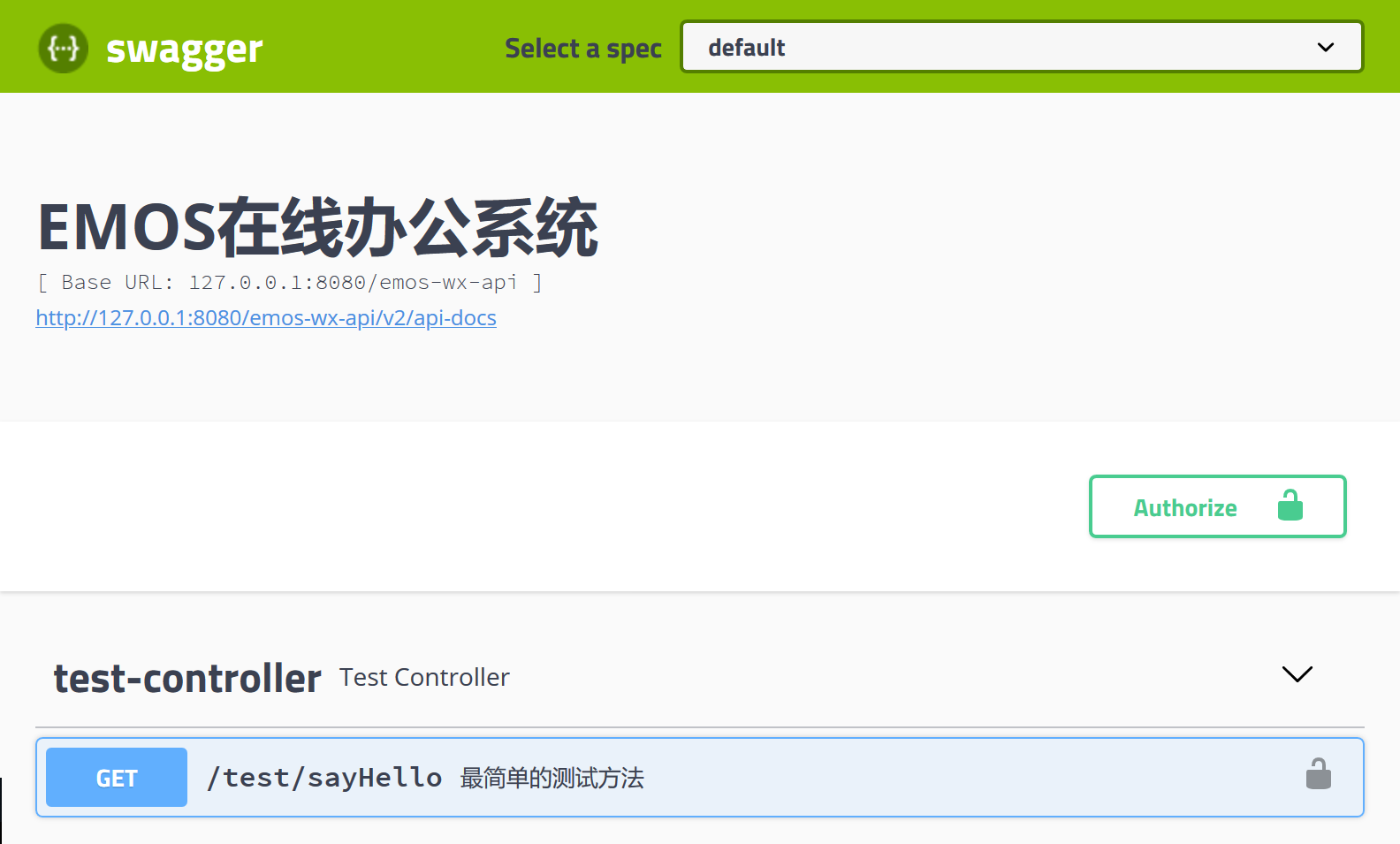开发前后端分离架构的项目,往往调试后端Web接口需要用到POSTMAN工具。虽然POSTMAN工具的功能非常强大,但是请求参数很多的情况下,我们手写这些参数和数据还是非常麻烦的。因此我们需要一个调试后端Web接口更加简便的方法。恰好Swagger提供了REST API调用方式,我们不需要借助任何工具的情况下,访问Swagger页面,就可以对Web接口进行调用和调试,这种调试方式的效率要远超POSTMAN软件。
一、添加依赖库
在pom.xml文件中添加Swagger依赖库,这里我们使用的是Swagger2版本,在UI方面,比Swagger1版本要好看很多。
<dependency>
<groupId>io.springfox</groupId>
<artifactId>springfox-swagger2</artifactId>
<version>2.9.2</version>
</dependency>
<dependency>
<groupId>io.springfox</groupId>
<artifactId>springfox-swagger-ui</artifactId>
<version>2.9.2</version>
</dependency>二、创建Swagger配置类
在com.example.emos.wx.config包中创建SwaggerConfig类]
package com.example.emos.wx.config;
import io.swagger.annotations.ApiOperation;
import org.springframework.context.annotation.Bean;
import org.springframework.context.annotation.Configuration;
import org.springframework.web.servlet.config.annotation.WebMvcConfigurer;
import springfox.documentation.builders.ApiInfoBuilder;
import springfox.documentation.builders.PathSelectors;
import springfox.documentation.builders.RequestHandlerSelectors;
import springfox.documentation.service.ApiInfo;
import springfox.documentation.service.ApiKey;
import springfox.documentation.service.AuthorizationScope;
import springfox.documentation.service.SecurityReference;
import springfox.documentation.spi.DocumentationType;
import springfox.documentation.spi.service.contexts.SecurityContext;
import springfox.documentation.spring.web.plugins.ApiSelectorBuilder;
import springfox.documentation.spring.web.plugins.Docket;
import springfox.documentation.swagger2.annotations.EnableSwagger2;
import java.util.ArrayList;
import java.util.List;
@Configuration
@EnableSwagger2
public class SwaggerConfig {
@Bean
public Docket createRestApi() {
Docket docket = new Docket(DocumentationType.SWAGGER_2);
// ApiInfoBuilder 用于在Swagger界面上添加各种信息
ApiInfoBuilder builder = new ApiInfoBuilder();
builder.title("EMOS在线办公系统");
ApiInfo apiInfo = builder.build();
docket.apiInfo(apiInfo);
// ApiSelectorBuilder 用来设置哪些类中的方法会生成到REST API中
ApiSelectorBuilder selectorBuilder = docket.select();
selectorBuilder.paths(PathSelectors.any()); //所有包下的类
//使用@ApiOperation的方法会被提取到REST API中
selectorBuilder.apis(RequestHandlerSelectors.withMethodAnnotation(ApiOperation.class));
docket = selectorBuilder.build();
/*
* 下面的语句是开启对JWT的支持,当用户用Swagger调用受JWT认证保护的方法,
* 必须要先提交参数(例如令牌)
*/
//存储用户必须提交的参数
List<ApiKey> apikey = new ArrayList();
//规定用户需要输入什么参数
apikey.add(new ApiKey("token", "token", "header"));
docket.securitySchemes(apikey);
//如果用户JWT认证通过,则在Swagger中全局有效
AuthorizationScope scope = new AuthorizationScope("global", "accessEverything");
AuthorizationScope[] scopeArray = {scope};
//存储令牌和作用域
SecurityReference reference = new SecurityReference("token", scopeArray);
List refList = new ArrayList();
refList.add(reference);
SecurityContext context = SecurityContext.builder().securityReferences(refList).build();
List cxtList = new ArrayList();
cxtList.add(context);
docket.securityContexts(cxtList);
return docket;
}
}三、编写测试Web接口
在com.example.emos.wx.controller包中创建TestController类。
package com.example.emos.wx.controller;
import com.example.emos.wx.common.util.R;
import io.swagger.annotations.Api;
import io.swagger.annotations.ApiOperation;
import org.springframework.web.bind.annotation.GetMapping;
import org.springframework.web.bind.annotation.RequestMapping;
import org.springframework.web.bind.annotation.RestController;
@RestController
@RequestMapping("/test")
@Api("测试Web接口")
public class TestController {
@GetMapping("/sayHello")
@ApiOperation("最简单的测试方法")
public R sayHello(){
return R.ok().put("message","HelloWorld");
}
}四、测试Web接口
打开浏览器,访问http://127.0.0.1:8080/emos-wx-api/swagger-ui.html

原文链接:http://140.143.132.225:8000/project-1/doc-17/
扫码在手机查看

您没有登录或者此篇文章不允许评论哟~~
暂无评论